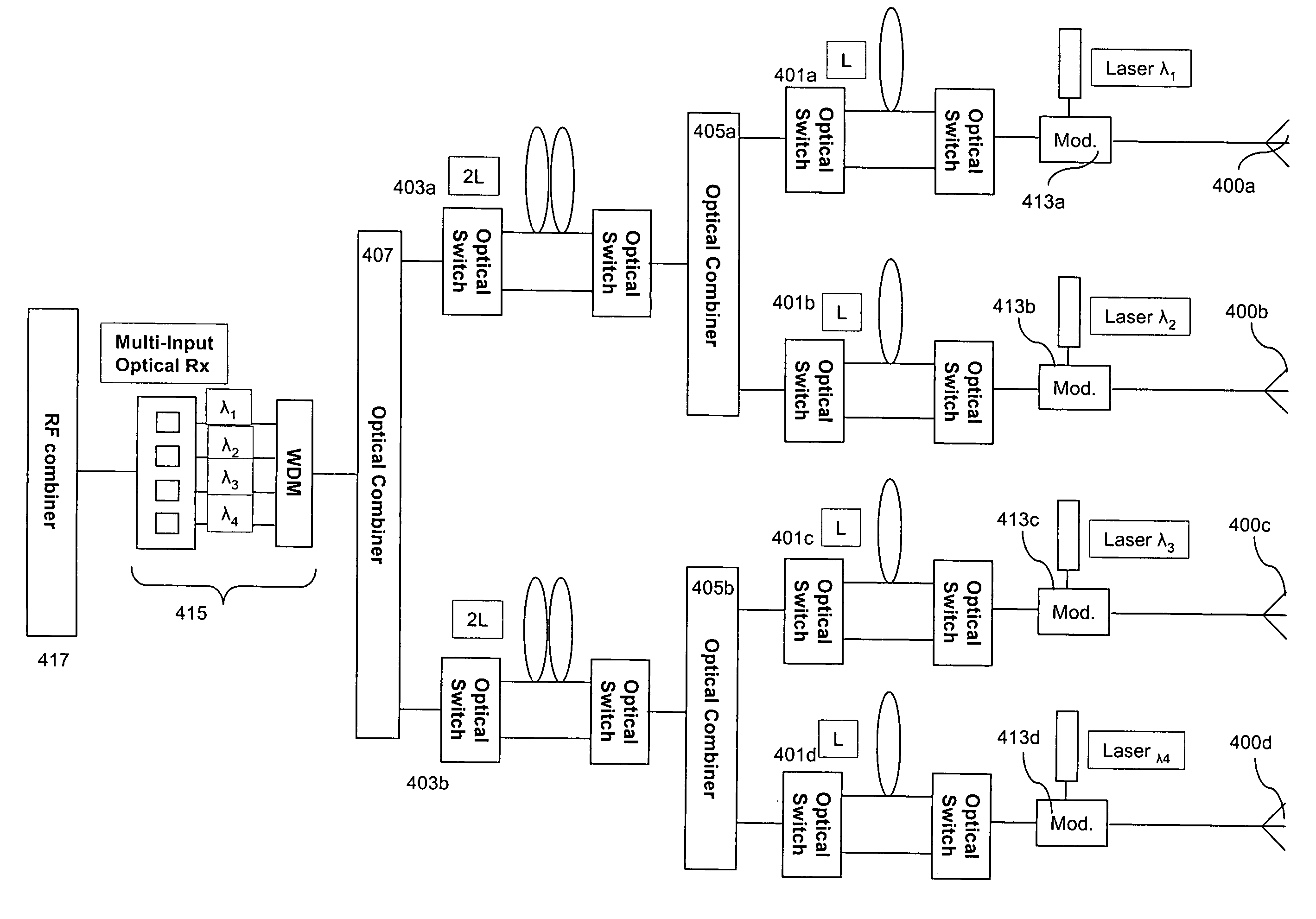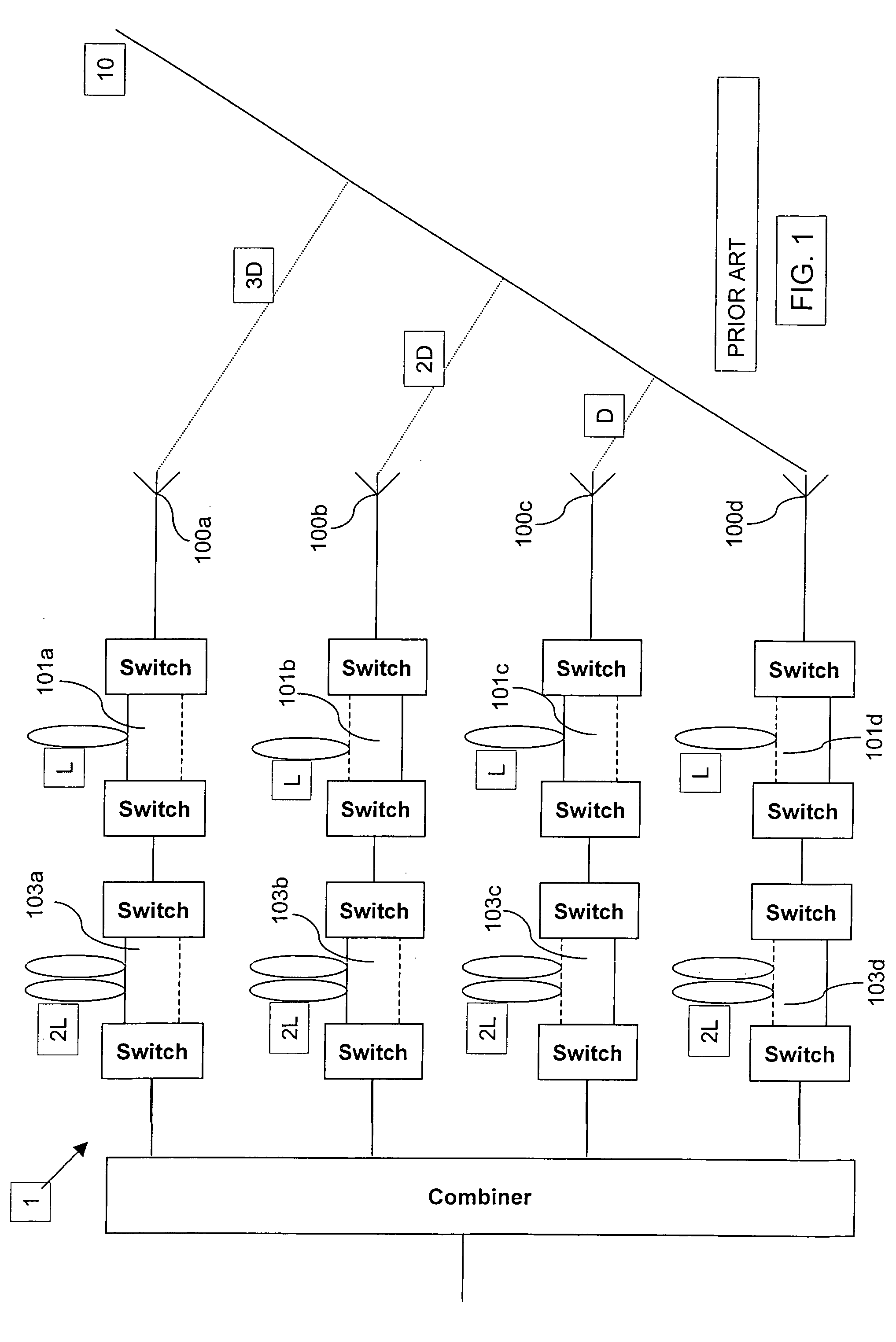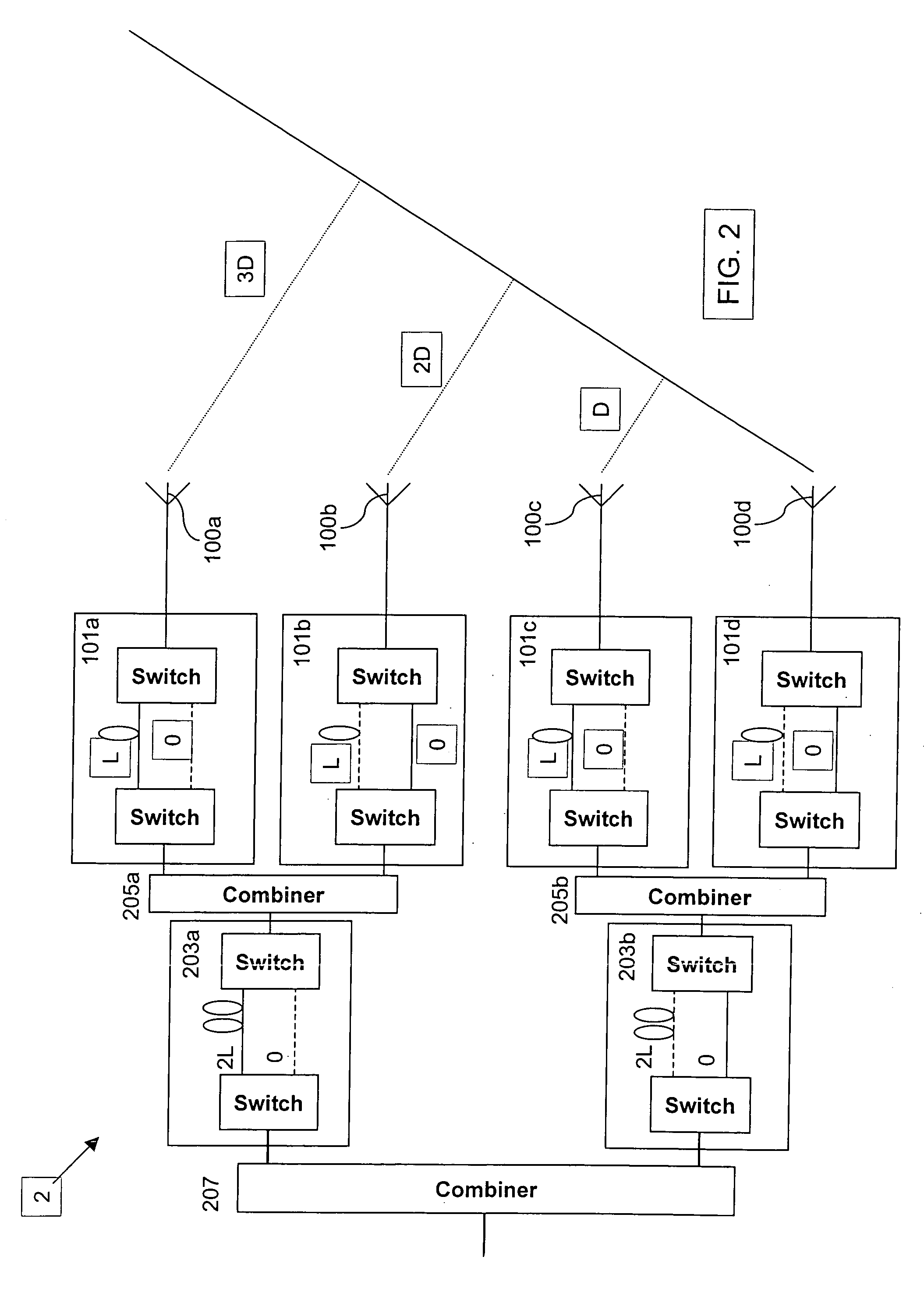Beam steering apparatus
a technology of beam steering and beam, which is applied in the direction of electrical apparatus, electrical transmission, electromagnetic transmission, etc., can solve the problems of bulky and costly arrangements, and achieve the effect of reducing signal loss and dispersion
- Summary
- Abstract
- Description
- Claims
- Application Information
AI Technical Summary
Benefits of technology
Problems solved by technology
Method used
Image
Examples
first embodiment
[0039]Embodiments of beam steering apparatus according to the invention will now be described with reference to FIGS. 2 and 3. Turning firstly to FIG. 2, in the invention, referred to herein as a beamformer, the beamformer 2 comprises a plurality of first delay units 101a . . . 101d, each of which is arranged to apply an amount of time delay to signals transceived by a respective antenna element, and a plurality of second delay units 203a, 203b, each of which is arranged to apply an amount of time delay to signals that have been modified by the first delay units 101a . . . 101d. At least one 203a, and preferably both 203a, 203b, of the second units are connected to two first delay units 101a, 101b via a combiner unit 205a, 205b, which, in the case of combiner unit 205a, is arranged to combine signals that have been modified by the associated first delay units 101a, 101b, and in the case of combiner unit 205b, is arranged to combine signals that have been modified by the associated f...
second embodiment
[0047]Whilst in the second embodiment the delay units are provided by OEIC, they could alternatively be provided by suitable mechanical switches.
[0048]Whilst in the above embodiments the entire beamformer is shown to be configured in accordance with the invention, the hierarchical arrangement of first delay units and second delay units could alternatively be applied to a selected part of the beamformer.
[0049]Whilst in the above embodiments the delay unit arrangement includes one switchable delay unit at each node, the arrangement could alternatively comprise a plurality of two-way switchable delay units arranged in series at each node in at least the highest level nodes of the hierarchy (the antenna element level.) Each such a series would consist of delay units having progressively smaller time delay differences between their two respective settings (e.g. L, L / 2, L / 4, etc.), whereby a variety of time delays may be applied at selected increments (e.g. L / 4) at each element. Thus, a v...
PUM
 Login to View More
Login to View More Abstract
Description
Claims
Application Information
 Login to View More
Login to View More - R&D
- Intellectual Property
- Life Sciences
- Materials
- Tech Scout
- Unparalleled Data Quality
- Higher Quality Content
- 60% Fewer Hallucinations
Browse by: Latest US Patents, China's latest patents, Technical Efficacy Thesaurus, Application Domain, Technology Topic, Popular Technical Reports.
© 2025 PatSnap. All rights reserved.Legal|Privacy policy|Modern Slavery Act Transparency Statement|Sitemap|About US| Contact US: help@patsnap.com



